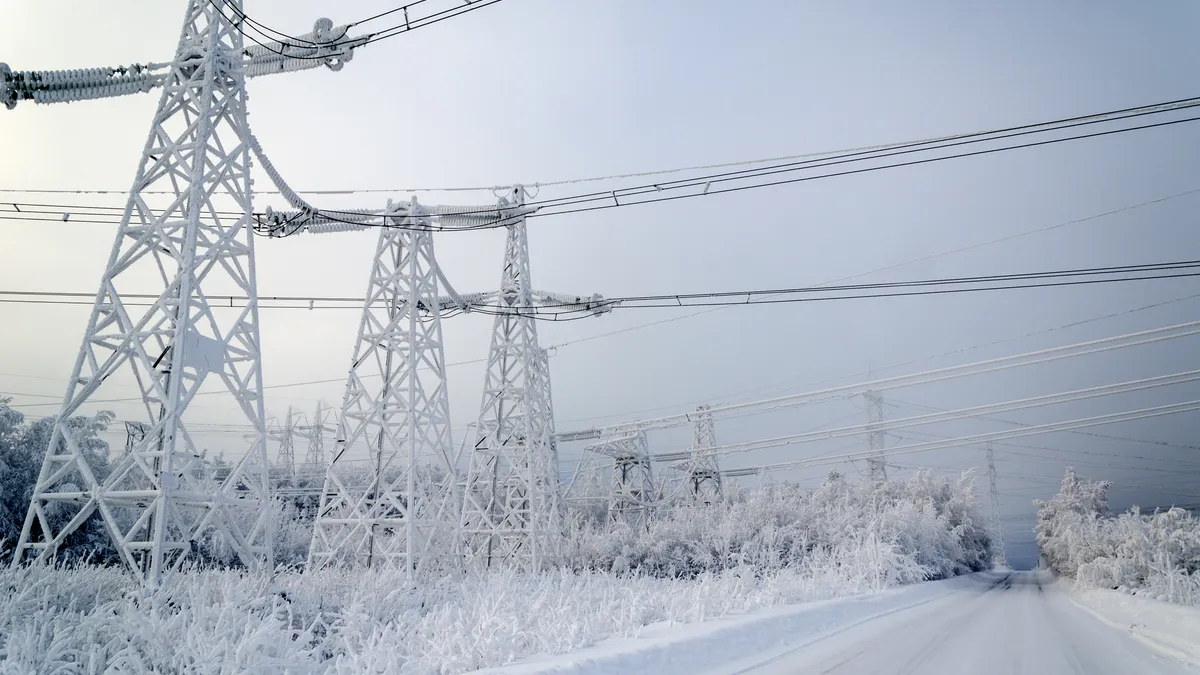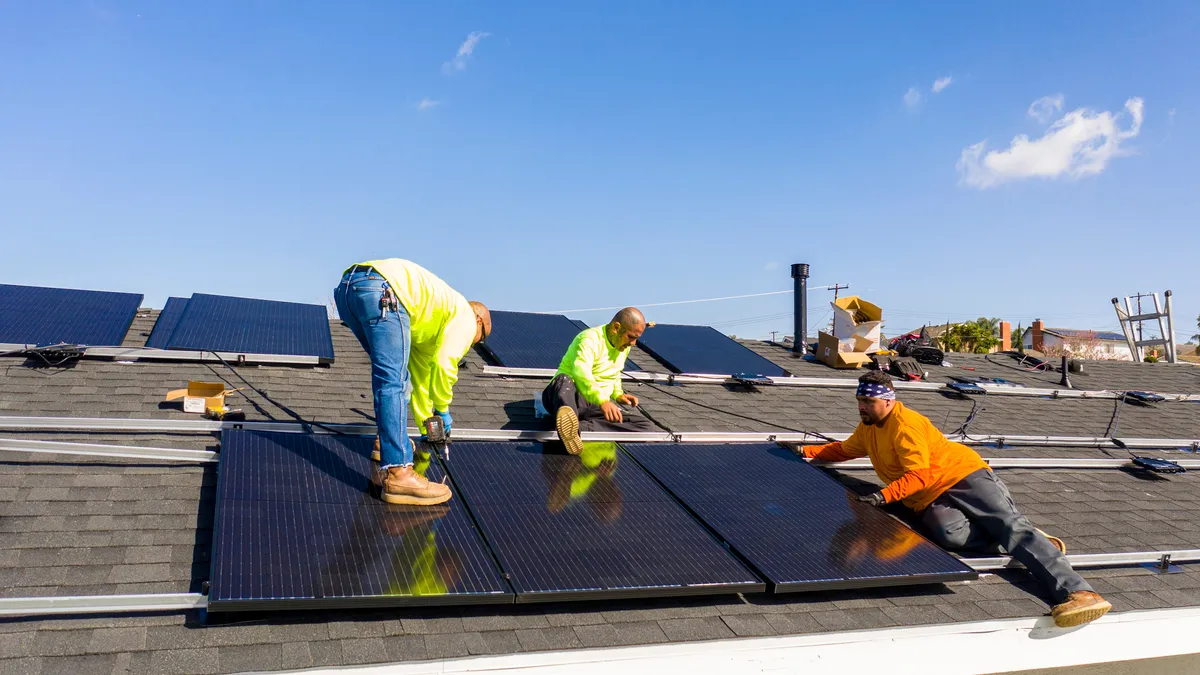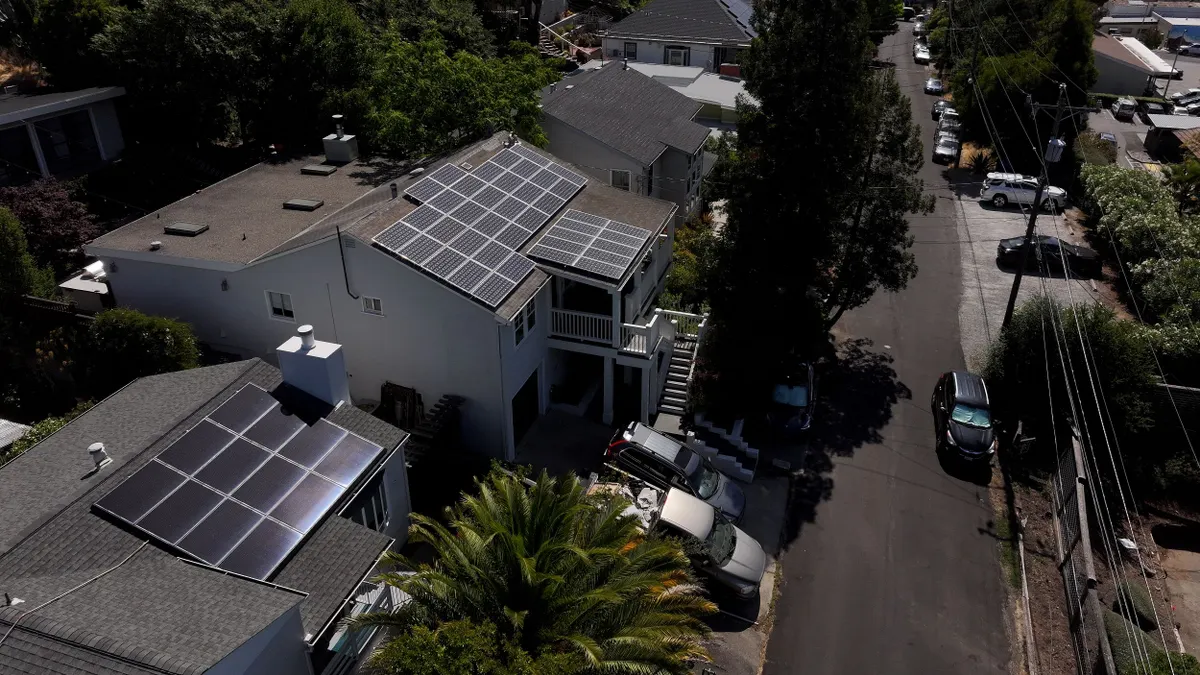Dive Brief:
- The New England Independent System Operator and New York ISO, which serve a population of about 35 million across seven northeastern states, are projecting healthy margins above expected winter peaks, they said Monday and Friday, respectively.
- The New England grid operator said it has about 31 GW of supply capacity available to meet a winter peak forecast of 21.1 GW, under scenarios with below-average temperatures. New York’s winter assessment found almost 30 GW of power resources available to meet a forecasted winter peak demand of 24.2 GW.
- While the grid operators expressed confidence heading into this winter, a broad shift from gas to electric heating is underway and expected to turn the regional grid into a winter-peaking system sometime in the mid-2030s, ISO-NE has previously said. The system reported a summer peak of 26 GW during a June heat wave this year, the highest in more than a decade but still below the region’s all-time peak of 28 GW set in August 2006, it said.
Dive Insight:
2025 marks the first time the ISO-NE has used a new Probabilistic Energy Adequacy Tool to assess energy shortfall risks against a newly-defined threshold. PEAT is designed to quantify potential energy shortfall risk due to extreme weather events, the grid operator said.
“We’re well-prepared heading into winter,” Stephen George, ISO New England’s vice president of system operations and market administration, said in a statement. “Our enhanced forecasts and operating tools give us confidence in the system’s ability to meet electricity demand across New England.”
ISO-NE serves Connecticut, Maine, Massachusetts, New Hampshire, Rhode Island and Vermont.
In the event of a sudden loss of generation, or transmission issues, ISO said it can ask that maintenance be deferred on some generators, increase energy imports or call on reserve resources, to make up any shortfall.
Last winter, New England power demand peaked at 19.6 GW. The grid operator anticipates peak demand of 20 GW this winter under normal temperatures, and slightly higher under an extreme weather scenario.
In New York, grid officials say they are confident but cautious.
“Our assessment finds there are adequate resources to serve demand on the grid under forecasted conditions, but we’ve also seen generators in recent winters challenged with accessing adequate fuel capacity during very cold conditions,” Aaron Markham, NYISO vice president of operations, said in a statement.
The grid operator said it is coordinating with state agencies, other grid operators and the natural gas industry, including the Interstate Natural Gas Association of America, the Natural Gas Supply association and the Northeast Gas Association.
“In general, winter reliability of the grid is a growing concern, especially during extended cold snaps and other extreme weather,” Markham said.
In October, the New York grid operator said the state’s electric system faces increased risk of power shortages over the next five years unless planned projects, including new transmission and offshore wind resources, are brought online. Reliability margins in New York City will be particularly thin beginning next summer, it said.
Separately, the Southwest Power Pool, which manages a 14-state territory, said it is taking proactive steps to manage winter demand.
SPP officials say they have “no major concerns” heading into the winter season, and plan to release its Winter 2025/2026 Readiness Forecast later on Monday.
Colder temperatures are predicted in the northern part of the system’s footprint, and warmer-than-normal temperatures are anticipated in the southern area, it said.
“Though we anticipate no major concerns this season, we are working proactively with our member utilities to monitor the grid and be prepared should significant winter storms cause power issues,” Bruce Rew, SPP senior vice president of operations, said in a statement.
SPP will hold a webinar at 2 p.m. Central time Monday to discuss the details of its winter reliability forecast.
The North American Electric Reliability Corp. is expected to publish its 2025 Winter Reliability Assessment on Tuesday.















